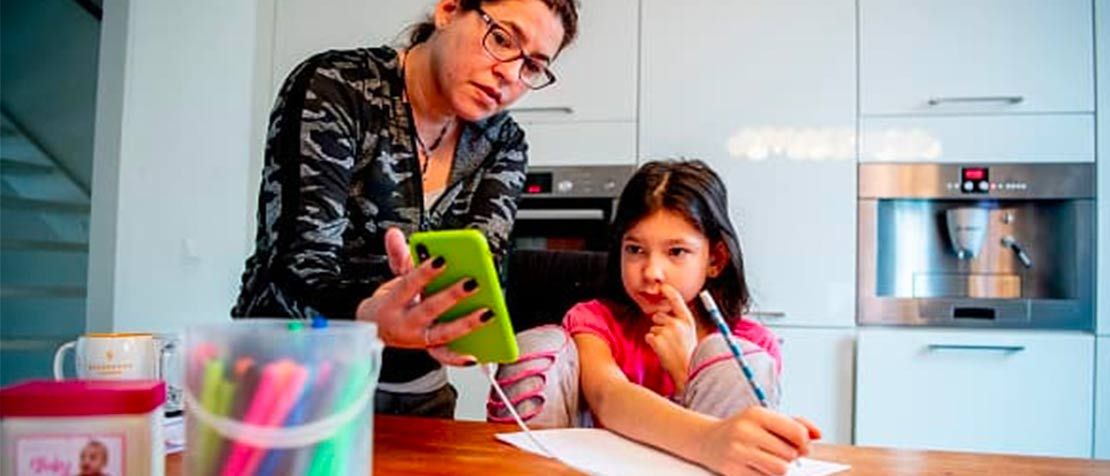
COVID-19: How digital learning solutions are taking shape
Like many other industries, the education sector has been severely impacted by the COVID-19 pandemic.
As of last week, 165 countries had closed schools nationwide, impacting over 1.5 billion children and youth, according to UNESCO (The United Nations Scientific and Cultural Organization).
There is also still great uncertainty as to when schools will reopen.
Thankfully, these days, there are many free (or low-cost), easy-to-use digital communication tools that allow for a range of remote learning solutions.
For now, teachers, students and families are still grappling with the immediate task of conducting online classes and remote learning, in the confinement of their homes. Some, for the very first time.
So what are the options available?
Digital learning solutions
UNESCO offers a comprehensive list of distance learning solutions including educational applications, platforms and resources which aim to help parents, teachers, schools and school administrators facilitate student learning and provide social care and interaction during periods of school closure.
There is also a list of national learning platforms and tools.
In Algeria, the National Bureau for Distance Education and Training (Office national d’éducation et de formation à distance) of the Ministry of Education provides online learning platforms in different subjects for all academic levels.
Spain’s Educlan, for example, is an online channel supported by the Ministry of Education that presents educational resources during the period of suspension of classes because of the coronavirus.
Lebanon’s Ministry of Education app in Arabic, English and French and can be shared with up to six family members.
In France, Ma classe à la maison (my lesson at home), is designed to enable pupils to continue their studies at home and keep in touch with their teachers.
Switzerland’s joint website Eduport of the State Secretariat for Education, Research and Innovation and the Swiss Conference of Cantonal Ministers of Education has information, links and resources in support of distance learning.
Education ministers scale up measures to ensure continuity
Ministers have recently been scaling up multimedia approaches to ensure learning continuity around the world.
For all countries, avoiding the disruption of child learning to the extent possible is the first priority, and they are introducing or scaling up existing distance education modalities based on different mixes of technology.
For example, Costa Rica is using social networks to relay daily reading plans for students and parents and challenge students to develop campaigns to contain the spread of the pandemic.
Italian Education Minister Lucia Azzolina, said: “We are using social media tools to keep alive the relationship between teachers and students, and keep up their motivation.”
The Ministry of Education and Research of Estonia announced that it was “humbled” to share all of its digital education tools to support other countries’ education systems during the COVID-19 crisis. The list of tools that are internationally available are here.
The United Arab Emirates announced on 22 March a two-week distance learning initiative including all its students.
In almost all countries, teachers and school administrators are encouraged to use applications to support communication with learners and parents as well as deliver live lessons or record massive open online course (MOOC) styled lessons.
Learning content is also delivered through TV and other media.
For example, the Ministry of Education in Spain and FP and RTVE launched “Aprendemos en Casa (We learn at home)” on 23 March to educate 6-16 year old students during the suspension of traditional classes. The programmes include five hours per day of education.
“Only 60% of students have Internet so we had to provide a mix of distance education with open TV to reach everyone,” says Mexico’s Education Minister, Esteban Moctezuma Barragán, adding that his country is also exploring strategies to reach children with special needs.
Education and technology join forces
There have already been some examples of recent joint efforts between the education and technology sectors for realizing the potential of technology in education.
China is an example where the pandemic brought the Ministry of Education and the Ministry of Technology together to ensure that Chinese students continued learning when classes were disrupted due to the coronavirus outbreak.
“The response of China’s education system to the COVID-19 emergency is remarkable, in terms of depth of the remote learning facilities being made available, and of the scale required to cover needs,” said Marielza Oliveira, Director of the UNESCO Beijing office.
The UK Department for Education in 2019 published a strategy to help education providers and the technology industry. The comprehensive publication includes sections on developing digital capability and skills, promoting digital safety, improving the Department of Education’s digital services, and more.
Schools finding their own way
While many schools are guided by ministries who are offering recommended online education platforms, the education systems in many countries is decentralized, and some schools are finding their own way.
Moreover, while the duration of school closures remains uncertain, some countries are concentrating their efforts on empowering teachers.
“We are very focused on giving teachers responsibility for the process of learning and offering virtual learning courses,” says Costa Rica’s Vice Minister of Education Melania Brenes.
Croatia’s Minister of Science and Education Blaženka Divjak says that her country’s approach first prioritized tailor-made contents for teachers and is now increasing support to help them develop learning materials independently, taking ownership of the process, and feeling secure in a digital environment.
These actions and partnerships are just a small sampling of the digital solutions being found in these extraordinary times, but they will certainly help the world’s children to continue their education during this particularly difficult period.
Photo by Robin Utrecht/SOPA Images/LightRocket via Getty Images
